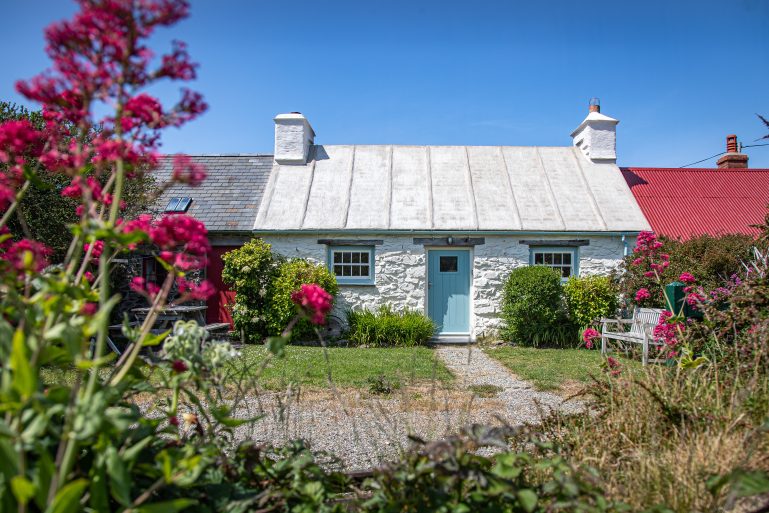At Under the Thatch we believe in authentic conservation of traditional buildings, and although we represent a variety from ‘hard core’ museum pieces to more modern alternatives, colour and natural pigments is a favourite topic of ours. We often get asked about how certain colours were achieved… so here are our inside tips!
Dyffryn, Ceredigion
Note here how the yellow limewash is used on the main farmhouse and white on the service wing – entirely correct. Colour is used sparingly and to differentiate between building types.
Penrhiw, Ceredigion
We say ‘yellow ochre’ for these strong yellows, but some are in fact formed from yellow iron oxides. Again to get the perfect finish throw in a handful of say umber to take the edge off the sharpest yellows.

Bwlch Newydd, Carmarthenshire
A gentle cream – achieved from one of the natural yellow ochres (rather than the brighter yellow iron oxides). There’s a huge variety in them, but if they’re ‘too’ yellow then experiment with umbers.

Ffermdy Trehilyn, Pembrokeshire
Most reds that you see are limewashes saturated with iron oxide. Mix in a bit of burnt umber and a bit of yellow ochre for the perfect finish.

Suffolk House, Suffolk
Red iron oxides come in various hues, but at Suffolk House it looks like some ochre has been added to give warmth. A nice thing about using a mix of natural pigments in limewash is that they’re not all as stable as each other and so you can get a differential colour fade when you look close, especially when applied to drying lime plasters.

Tŷ Rownd, Aberaeron, Ceredigion
Pink is a simple mix of whitewash with some red iron oxide pigment added. Seen all over, but especially common in West Wales in the later C19 and C20. Used indoors and out.

Cwm Hill, Pembrokeshire
This cottage was last limewashed before WWII, then abandoned before we restored it, so we were able to colour match exactly to the original colour. A scrape showed us the cottage had only ever been pink since construction in c1850.

Bryn Eglur, Carmarthenshire
Limewash provides a breathable, antibacterial surface and is the best solution for any breathable stone wall – it also absorbs and reflects light in a more pleasing manner than say modern polymer paints.

Bwthyn Tresinwen, Strumble Head, Pembrokeshire
Unpigmented limewash is by far the most common limewash colour, made from watering down lime putty (itself formed from slaked limestone). At Tresinwen even the roof is grouted and limed – so typical of the Pembrokeshire vernacular!

Sussex House, Sussex
Most limewash colours are by nature pale, as the lime ‘bleaches’ any colour that you add to it. This is likely a mix with yellow ochre, and possibly a touch of umber. Many timber-framed buildings were completely limed over, as seen here on the handmade bricks.



